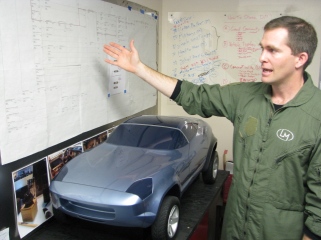 CoDev2013 is just around the corner and we are excited to continue to share some of the insights and expertise of our conference faculty with you as we prepare this important annual forum.
CoDev2013 is just around the corner and we are excited to continue to share some of the insights and expertise of our conference faculty with you as we prepare this important annual forum.
Jay Rogers, CEO of Local Motors, is helping to build a game-changing American car company. In his keynote address at CoDev2013, he will be discussing how Local Motors has radically shifted product design, development and manufacturing in the auto industry through crowdsourcing and pure co-creation efforts. We catch up with Jay to find out the key steps in leveraging the crowd in co-creation.
CoDev2013: How does your open innovation strategy intersect with your innovation process?
Rogers: Open innovation is our innovation process. It is at the heart of everything we do; allowing us to reach that next-level of product design, development and production at a pace of up to10x faster than traditional models.
CoDev2013: What are the key differences between leveraging a crowd vs. traditional, more closed processes?
Rogers: It gives us a broader situational awareness than traditional processes; allowing us to take the production constraints into consideration as part of the development challenge, providing a path to production that is both more pragmatic, faster. Additionally, it enables the involvement of all the different stakeholders helping to prevent the ‘not invented here’ syndrome that can come from the use of external services to drive or support what are perceived as internal or traditional processes.
CoDev2013: What one piece of advice would you give to someone that is trying to champion disruptive innovation through their corporate immune system?
Rogers: It may sound counterintuitive to being disruptive, but I would advise to emphasize the key similarities to traditional systems as much as the differences. Current processes have been thought about and developed over the past hundred years or more arguably, and they have some very good elements. Project Management and Team Management methodologies, for example, have come a long way through the first, second and now third industrial revolutions. It would be wrong to totally divorce yourself from these techniques in the name of disruptive innovation.
Leveraging a crowd is a great way to gain early adopters and advance disruptive ideas while still trying to maintain good practice in these areas.
CoDev2013: How do you explain the reluctance of “corporate” innovation to embrace crowd-powered innovation?
Rogers: Companies usually worry about using crowd development because they see a great lack of control. They worry that they won’t know the people, or they won’t be able to validate the material, and so on. It’s important to recognize and understand that these same risks exist in traditional corporate R&D departments as well.
